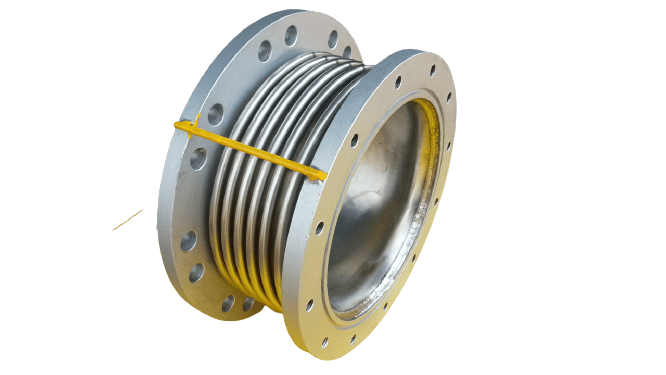
Pipe expansion joints, designed to absorb thermal expansion, vibrations, and other mechanical stresses, are crucial in various industries. The choice of material for these joints significantly impacts their performance, durability, and suitability for specific applications. Let’s explore the materials commonly used in pipe expansion joints and how to select the right one for your needs.
Common Materials Used in Pipe Expansion Joints
- Stainless Steel
Stainless steel is a popular choice for pipe expansion joints due to its excellent corrosion resistance, high strength, and ability to withstand extreme temperatures. It is particularly suitable for chemical, petrochemical, and food processing applications.
Pros:
- High resistance to corrosion and oxidation
- Excellent strength and durability
- Suitable for high-temperature applications
Cons:
- More expensive compared to other materials
- Can be prone to stress corrosion cracking in certain environments
2. Rubber
Rubber expansion joints are known for their flexibility and ability to absorb vibrations. They are widely used in piping systems that carry fluids at lower temperatures and pressures, such as water and sewage systems.
Pros:
- Excellent flexibility and vibration absorption
- Good resistance to abrasion and chemicals
- Cost-effective
Cons:
- Limited temperature range
- Susceptible to aging and degradation over time
3. Teflon (PTFE)
PTFE, commonly known as Teflon, offers exceptional chemical resistance and can handle high temperatures. It is ideal for applications involving highly corrosive substances, such as in the pharmaceutical and chemical industries.
Pros:
- Outstanding chemical resistance
- High-temperature tolerance
- Low friction coefficient
Cons:
- Higher cost
- Limited flexibility compared to rubber
4. Fabric
Fabric expansion joints are typically made from materials like fibreglass, silicone, or Kevlar. They are used in applications where flexibility and the ability to withstand high temperatures are essential, such as in exhaust systems and power plants.
Pros:
- High flexibility
- Can withstand very high temperatures
- Lightweight and easy to install
Cons:
- Lower mechanical strength
- May require more frequent replacement
5. Metal Alloys
Various metal alloys, such as Inconel and Hastelloy, are used in expansion joints for their superior mechanical properties and resistance to extreme conditions. These materials are suitable for highly specialised and demanding applications.
Pros:
- Excellent mechanical strength
- High resistance to corrosion and oxidation
- Suitable for extreme temperatures and pressures
Cons:
- Very high cost
- Can be difficult to work with and install
How to Choose the Right Material
Selecting the appropriate material for your pipe expansion joint depends on several factors:
- Application Requirements: Consider the specific conditions the joint will face, including temperature, pressure, and the type of fluid being transported.
- Environmental Conditions: Assess the ecological factors, such as exposure to chemicals, UV radiation, and weather conditions.
- Budget: Balance the cost of the material with the required performance and lifespan. Sometimes a more expensive material can save money in the long run by reducing maintenance and replacement costs.
- Installation and Maintenance: Think about the ease of installation and the maintenance needs of the material. Some materials require more frequent inspection and replacement.
Leading Expansion Bellows Manufacturers in India
India is home to several reputable manufacturers of expansion bellows, offering a wide range of products to meet diverse industrial needs. Here are a few notable manufacturers:
Flexpert Bellows is known for its high-quality expansion joints, including stainless steel bellows, metal bellows, and rubber bellows. Their products are used in various industries, such as oil and gas, power generation, and chemical processing.
Rectangular Bellows Expansion Joints
These joints are designed to handle large lateral and angular movements. They are often used in ducts and other large piping systems.
Gimbal Expansion Joints
Gimbal expansion joints are ideal for absorbing angular rotation in any plane. They are commonly used in complex piping systems where multiple directional movements need to be accommodated.
Universal Expansion Joints
Universal joints can absorb large amounts of movement in multiple directions, making them versatile and suitable for various applications.
Diesel Exhaust Expansion Joints
These joints are specifically designed for use in diesel exhaust systems, providing flexibility and vibration absorption.
Hinged Expansion Joints
Hinged joints allow angular movement in one plane and are often used in piping systems with directional changes.
Axial Expansion Joints
Axial joints are designed to absorb movements along the axis of the pipe, suitable for applications with linear expansion.
Lateral Expansion Joints
Lateral joints accommodate lateral movements and are typically used in piping systems that require flexibility in a specific direction.
Choosing the right material and manufacturer for your pipe expansion joints is crucial for ensuring the efficiency and longevity of your piping systems. Evaluate your specific needs and consult with manufacturers like Flexpert Bellows to find the best solution for your application.

One Response